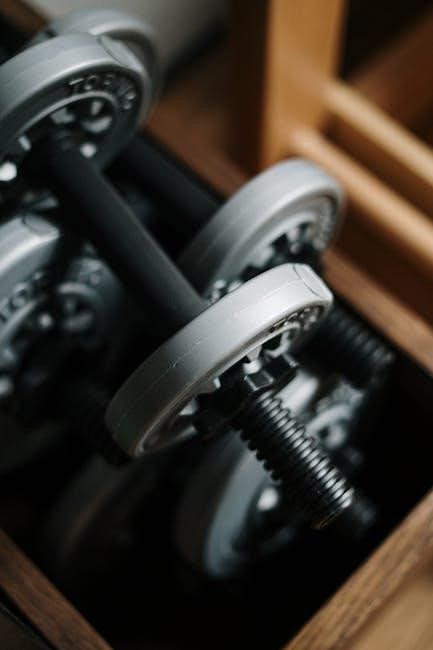Linux offers versatile options for handling PDF documents, evolving from beginner-friendly distributions to advanced command-line tools.
Exploring Linux’s capabilities reveals a robust ecosystem for viewing, managing, and interacting with portable document format files.
PDF accessibility on Linux is enhanced by various viewers and utilities, catering to diverse user preferences and technical expertise.
Beginner courses and online resources, like Linux.orgs, provide introductory guidance, while platforms like DistroSea enable online testing.
Linux distributions, such as Linux Mint and Ubuntu, offer seamless PDF integration, alongside specialized tools for advanced operations.
The operating system’s flexibility extends to dual-booting with Windows and even emulating Windows interfaces, like WindowsFX, running Ubuntu.
What is a PDF and Why Use Linux to Open Them?
PDF, or Portable Document Format, is a file format developed by Adobe to present documents consistently across various platforms. Its primary strength lies in preserving formatting, fonts, and images, ensuring the document appears as intended, regardless of the operating system or software used to view it. This makes PDFs ideal for sharing documents that need to maintain a specific appearance.
But why choose Linux to open these ubiquitous files? Linux provides a wealth of robust and often free PDF viewers, offering a compelling alternative to commercial software. Distributions like Ubuntu and Mint come pre-installed with excellent viewers, and many more are readily available through package managers. The open-source nature of Linux fosters a community-driven development process, resulting in frequent updates and improvements.
Furthermore, Linux offers command-line tools for PDF manipulation, appealing to power users and those seeking automation; Resources like Linux.orgs’ beginner courses demonstrate the accessibility of the operating system, while platforms like DistroSea allow for easy testing of different distributions. Linux’s inherent security features also provide an added layer of protection when handling sensitive PDF documents.
Common PDF Viewers for Linux
Linux boasts diverse PDF viewers, including Evince, Okular, and Xpdf, alongside browser-based options like Firefox and Chromium.
These tools offer varying features, catering to different user needs and preferences within the Linux ecosystem.
Evince (Document Viewer)
Evince, also known as the Document Viewer, is a popular and commonly pre-installed PDF viewer in many Linux distributions, particularly those utilizing the GNOME desktop environment.
It provides a clean and straightforward interface for opening and viewing PDF files, offering essential functionalities like zooming, searching, and navigating through pages.
Evince supports various document formats beyond PDFs, including PostScript, DjVu, TIFF, and XPS, making it a versatile choice for general document viewing.
Users can easily print documents, copy text, and select images directly from within Evince.
While Evince excels in basic viewing and navigation, it lacks advanced editing capabilities found in more specialized PDF editors.
However, its simplicity, speed, and integration with the GNOME desktop make it an excellent default option for most Linux users needing to open and read PDF documents.
It’s a reliable and efficient tool for everyday PDF viewing tasks.
Okular
Okular is a powerful and feature-rich PDF viewer developed by KDE, offering a comprehensive set of tools for working with PDF documents on Linux systems.
Beyond basic viewing, Okular supports annotations, form filling, and digital signatures, making it suitable for more advanced PDF workflows.
It boasts excellent rendering quality and supports a wide range of document formats, including PDF, PostScript, DjVu, CHM, and more.
Okular’s user interface is highly customizable, allowing users to tailor the appearance and functionality to their preferences.
The application integrates seamlessly with the KDE desktop environment but is also available for other Linux desktops.
It provides features like text selection, copy-paste, and printing, alongside advanced options like OCR (Optical Character Recognition) for scanned documents.
Okular is a robust and versatile PDF solution for Linux users.
Xpdf
Xpdf is a lightweight and efficient PDF viewer for Linux, known for its speed and minimal resource usage. It’s a foundational tool in the Linux PDF viewing landscape.
Originally designed as a command-line application, Xpdf also offers a graphical user interface (GUI) for easier interaction.
While it may lack some of the advanced features found in more modern viewers like Okular or Evince, Xpdf excels at quickly and reliably displaying PDF content.
It’s particularly useful on older hardware or systems with limited resources where performance is critical.

Xpdf supports basic PDF functionalities such as zooming, searching, and printing.
Its command-line interface allows for scripting and automation, making it suitable for batch processing of PDF files.
Xpdf remains a valuable option for users seeking a simple, fast, and dependable PDF viewer on Linux;
Firefox and Chromium-Based Browsers
Firefox and Chromium-based browsers, like Google Chrome and Microsoft Edge, offer built-in PDF viewing capabilities on Linux systems, eliminating the need for dedicated PDF reader software.
These browsers utilize their internal PDF plugins to directly render PDF files within the browser window.
This provides a convenient and seamless experience for viewing PDFs without downloading or installing additional applications.
Users can simply drag and drop a PDF file into an open browser tab or use the browser’s “Open File” option.
Browser-based PDF viewers typically support essential features like zooming, printing, and searching.
However, advanced editing or annotation features may be limited compared to dedicated PDF editors.
The integration of PDF viewing within web browsers streamlines workflow and enhances accessibility for Linux users.

Opening PDFs from the Command Line

Linux empowers users to open PDF files directly from the terminal, utilizing commands associated with installed PDF viewers.
This method provides efficiency and scripting possibilities, integrating PDF handling into automated workflows and shell scripts.
Using `evince` from the Terminal
Evince, also known as the Document Viewer, is a popular choice for opening PDFs on Linux systems, and it can be readily launched from the command line.
To open a PDF file using Evince, simply type evince followed by the path to the PDF file in your terminal and press Enter.
For example, to open a file named “document.pdf” located in your Documents directory, you would use the command evince ~/Documents/document.pdf.
Evince offers several command-line options for controlling its behavior, such as specifying a particular page to open or displaying the document in full-screen mode.
You can view these options by typing evince --help in the terminal, which will display a comprehensive list of available parameters.
This direct access from the command line makes Evince a versatile tool for both casual users and those who prefer a text-based interface.
It’s a fundamental method for integrating PDF viewing into scripts and automated tasks within a Linux environment.
Using `okular` from the Terminal

Okular, a powerful and feature-rich PDF viewer, can also be efficiently utilized from the Linux terminal, providing a command-line interface for document access.
To open a PDF file with Okular, type okular followed by the file path in your terminal and execute the command.
For instance, to open “report.pdf” in your Downloads folder, use okular ~/Downloads/report.pdf.
Okular supports numerous command-line options, allowing customization of the viewing experience, such as specifying a starting page or enabling presentation mode.
Typing okular --help in the terminal reveals a detailed list of these options, offering granular control over the application’s behavior.
This terminal access is particularly useful for scripting and automating PDF-related tasks within a Linux workflow.
Okular’s robust capabilities, combined with command-line accessibility, make it a valuable tool for power users and developers alike.
Using `xpdf` from the Terminal
Xpdf, a lightweight and versatile PDF viewer, offers a straightforward command-line interface for opening and interacting with PDF documents in Linux.
To launch Xpdf from the terminal, simply type xpdf followed by the path to the PDF file you wish to view and press Enter.
For example, to open a file named “document.pdf” located in your current directory, use the command xpdf document.pdf.
Xpdf provides a range of command-line options for customizing the viewing experience, including specifying page numbers and zoom levels.
Typing xpdf -help in the terminal displays a comprehensive list of available options, enabling precise control over the application’s functionality.
Its simplicity and efficiency make Xpdf an excellent choice for users who prefer a minimal and fast PDF viewer.
This command-line access is particularly beneficial for scripting and automating PDF handling tasks within a Linux environment.
Troubleshooting PDF Opening Issues
PDF opening problems in Linux often stem from file corruption, permission restrictions, or missing software dependencies.
Addressing these issues requires verifying file integrity, adjusting access rights, and ensuring necessary packages are installed.
PDF File is Corrupted
PDF file corruption presents a common obstacle when attempting to open documents in Linux, manifesting as errors or incomplete rendering.
Several factors can contribute to this, including incomplete downloads, storage media errors, or issues during file creation or transfer.
If a PDF appears corrupted, initially attempt re-downloading the file from its original source to ensure data integrity.

Alternatively, try opening the PDF with a different viewer – Evince, Okular, or even a web browser like Firefox – to isolate whether the problem lies with the file itself or a specific application.
Online PDF repair tools can sometimes recover damaged files, though success isn’t guaranteed, especially with severely corrupted documents.
Consider the source of the PDF; if it originated from an unreliable source, the file may have been inherently flawed from the beginning.
Regularly backing up important PDF files can mitigate data loss due to corruption.
Incorrect Permissions
Linux’s robust permission system can inadvertently prevent access to PDF files, resulting in “permission denied” errors when attempting to open them.
File permissions dictate which users or groups have read, write, and execute access; if a user lacks the necessary read permissions, the PDF won’t open.
To rectify this, utilize the command line to modify permissions using the `chmod` command. For example, `chmod +r filename.pdf` grants read permission to all users.
Alternatively, `chmod 755 filename.pdf` sets more specific permissions, allowing the owner full access, and others read and execute access.
Ensure the user attempting to open the PDF is part of the group that owns the file, or adjust group permissions accordingly with `chgrp`.
Incorrect ownership can also cause issues; use `chown` to change the file’s owner if necessary.
Understanding Linux file permissions is crucial for resolving access problems and ensuring smooth PDF viewing.
Missing Dependencies
PDF viewers in Linux rely on specific software libraries, known as dependencies, to function correctly; a missing dependency can prevent a PDF from opening.
When a dependency is absent, the viewer may display an error message or fail to launch altogether, hindering your ability to access the document.
Resolving this involves identifying and installing the missing packages using your distribution’s package manager, such as `apt` (Debian/Ubuntu) or `yum` (Fedora/CentOS).
Common dependencies include `libpoppler-glib`, `libpdf-tools`, and related graphical libraries, depending on the viewer used.
Run commands like `sudo apt install libpoppler-glib` or `sudo yum install libpdf-tools` to install the necessary components.
Consult your distribution’s documentation or online forums for specific dependency requirements for your chosen PDF viewer.
Keeping your system updated ensures dependencies are met, preventing future issues with PDF viewing.

Advanced PDF Operations in Linux
Linux empowers users with tools for PDF editing, conversion, and security, extending beyond simple viewing capabilities.
LibreOffice Draw facilitates PDF modifications, while conversion utilities support various formats, enhancing document versatility.
Password protection and removal features offer control over document access, ensuring data confidentiality and security;
PDF Editing with LibreOffice Draw
LibreOffice Draw provides a surprisingly robust solution for editing PDF files directly within a Linux environment, offering capabilities beyond simple viewing.
Unlike many PDF viewers focused solely on display, Draw allows for direct manipulation of content, including text, images, and vector graphics.
Users can modify existing text, add new elements, and adjust the layout of PDF pages, making it suitable for minor corrections or enhancements.
However, it’s important to note that Draw treats PDFs as collections of objects, so complex formatting might not always be perfectly preserved.
For intricate PDF editing, dedicated PDF editors might be preferable, but LibreOffice Draw offers a convenient, free, and readily available option.
The software’s integration with the LibreOffice suite also allows for seamless conversion between PDF and other document formats, expanding its utility.
This makes LibreOffice Draw a valuable tool for users seeking basic to intermediate PDF editing functionality on their Linux systems.

It’s a practical choice when a full-fledged PDF editor isn’t necessary or available.
PDF Conversion to Other Formats
Linux offers numerous tools for converting PDF files into various other formats, extending their usability beyond simple viewing and editing.
LibreOffice, as previously mentioned, seamlessly converts PDFs to editable formats like .odt, .docx, and .rtf, facilitating content repurposing.
Command-line utilities like pdftotext extract text content, while pdfimages retrieves embedded images, providing granular control over conversion.
ImageMagick, a powerful image manipulation suite, can convert PDF pages into image formats such as .jpg, .png, or .tiff.
Online conversion services, accessible through Linux web browsers, offer another convenient option, though privacy considerations apply.
These conversions are valuable for archiving, sharing content with users lacking PDF viewers, or integrating PDF data into other applications.
The flexibility of Linux ensures a solution for nearly any PDF conversion requirement, from simple text extraction to complex format transformations.
Choosing the right tool depends on the desired output format and the complexity of the PDF document.
PDF Password Protection and Removal
Linux provides tools for both securing PDF documents with passwords and removing existing protection, offering control over document access.
PDFtk, a command-line utility, is frequently used to add password protection to PDF files, restricting opening or editing.
Similarly, PDFtk can remove passwords from protected PDFs, granting unrestricted access, though ethical considerations apply.
LibreOffice Draw also allows password protection during the PDF export process, providing a graphical interface option.
Qpdf is another powerful command-line tool capable of manipulating PDF security settings, including password removal and encryption.
It’s crucial to remember that circumventing password protection without authorization is illegal and unethical.
These tools are best used for managing documents you own or have explicit permission to modify.
Understanding the legal and ethical implications is paramount when dealing with password-protected PDFs on Linux.

Integrating PDF Viewers with File Managers
Linux file managers, like Nautilus and Dolphin, seamlessly integrate PDF viewers for quick document access and previewing capabilities.
This integration streamlines workflow, allowing users to open PDFs directly from the file manager with a single click or right-click option.
Configuration options within each file manager enable users to specify their preferred PDF viewer for default handling.
Nautilus (GNOME Files)
Nautilus, the default file manager in the GNOME desktop environment, provides a straightforward method for opening PDF files. Typically, double-clicking a PDF document will automatically launch your system’s default PDF viewer, such as Evince; However, users can customize this behavior to utilize alternative viewers like Okular or even browser-based options.

To modify the default application, right-click on a PDF file, select “Properties,” navigate to the “Open With” tab, and choose your preferred viewer from the list. You can also set this application as the default for all PDF files. Nautilus also supports previewing PDFs directly within the file manager itself, offering a quick glance at the document’s content without fully opening it.
This preview functionality is enabled by the GNOME desktop’s document handling capabilities, providing a convenient way to browse PDFs efficiently. Furthermore, Linux distributions like Linux Mint, utilizing Nautilus, benefit from this seamless integration, enhancing the user experience for PDF document management.
Dolphin (KDE)
Dolphin, the powerful file manager for the KDE Plasma desktop, offers robust functionality for handling PDF files. Similar to Nautilus, double-clicking a PDF typically opens it with the system’s default viewer, commonly Okular, a KDE-native PDF application. Dolphin provides extensive customization options, allowing users to easily associate PDF files with alternative viewers like Evince or web browsers.
To change the default application, right-click a PDF, select “Properties,” then the “File Type Options” tab. Here, you can specify your preferred viewer and set it as the default. Dolphin also features a preview pane, enabling quick viewing of PDF content directly within the file manager, streamlining workflow.
KDE’s integration with Okular ensures a smooth and feature-rich PDF experience. Distributions like Linux Mint, even with Cinnamon, can leverage Dolphin’s capabilities for efficient PDF management, showcasing Linux’s flexibility.

















































































